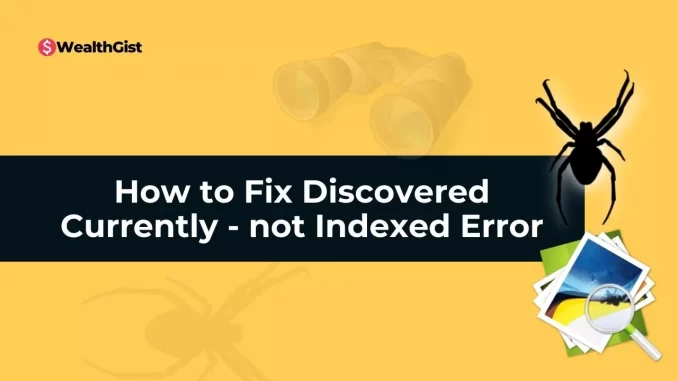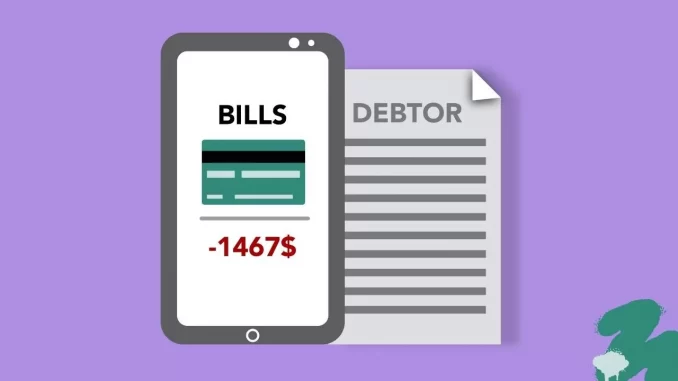Do you know that insurance companies now use AI to automate their activities? Read about artificial intelligence and Insurance and how AI is transforming the insurance industry.
Imagine you are driving to a meeting across town. You decide to take a different route than usual, hoping to avoid traffic.
As you approach an intersection, you see a red light. You slow down and stop. Suddenly, you hear a loud crash behind you.
You look in the rearview mirror and see another car has hit you from behind. You feel a jolt of pain in your neck and back. You reach for your phone to call for help.
But before you can dial, you receive a notification on your phone. It’s from your insurance company.
They have detected the accident and have already initiated the claim process. They have also sent a drone to inspect the damage and a tow truck to take your car to the nearest garage.
Also, they have booked you a replacement car and a doctor’s appointment and all you have to do is confirm your details and preferences.
You are amazed by how fast and easy the process is. You feel relieved and grateful.
This scenario may sound like it’s not happening anytime soon, but it is not far from reality.
Artificial intelligence is changing the insurance industry in many ways, from claims processing to risk assessment to product development.
The ability of machines to perform tasks that normally require human intelligence, such as perception, reasoning, learning, and problem-solving helps insurers improve efficiency, accuracy, customer satisfaction, and profitability.
In this article, we will discuss how AI is making a difference in the insurance industry and what the future may hold.
AI’s Impact on Claims Processing
Claims processing is one of the most important and costly functions of the insurance industry that involves validating, assessing, and settling claims from customers who have suffered a loss or damage.
Traditionally, claims processing has been manual, paper-based, and time-consuming as it requires a lot of human intervention and judgment.
However, AI can now help automate many aspects of claims processing, including
- Automating Validation and Paperwork: AI can now help you validate claims by verifying the identity of the claimant, the policy details, the coverage limits, and the eligibility criteria.
Then reduce paperwork by analyzing data from documents, images, and videos, and generating reports and invoices.
- AI Assessment of Property Damage: AI can also assess the extent and severity of property damage by using image recognition and computer vision to analyze photos and videos of the damaged property.
It can also use drones and satellites to inspect hard-to-reach areas and provide a more accurate and comprehensive view of the damage.
- Identifying Potential Fraud: AI also helps to detect and prevent fraud by using machine learning and anomaly detection to identify patterns and anomalies in claims data that indicate suspicious or fraudulent behavior.
It can also use natural language processing and sentiment analysis to analyze the tone and emotion of the claimant and flag any inconsistencies or red flags.
Introducing AI-Driven Insurance Products
AI is not only transforming the way insurers handle claims but also the way they offer insurance products.
Insurers use AI to create more personalized, flexible, and innovative products that meet the changing needs and preferences of customers such as
1. Enabling Usage-Based Insurance:
Usage-based insurance (UBI) is a type of insurance that charges premiums based on the actual usage or behavior of the customer, rather than on fixed or average rates.
For instance, UBI for car insurance can use telematics devices or smartphone apps to track the driving habits of the customer, such as speed, distance, time, location, and braking.
Based on this, the insurer can adjust the premium by rewarding safe and low-mileage drivers with lower rates and penalizing risky and high-mileage drivers with higher rates.
It can also apply to other types of insurance, such as health, life, and home insurance, by using wearable devices, smart home assistants, and other devices to monitor the health, lifestyle, and behavior of the customer.
2, Supporting Real-Time Equipment Monitoring:
AI can monitor the condition and performance of equipment and machinery in real-time, with the use of sensors, IoT devices, and cloud computing.
To help insurers prevent or mitigate losses due to equipment failure, malfunction, or breakdown.
3. Providing Dynamic Risk-Based Pricing:
Insurers use AI to provide more dynamic and accurate pricing of insurance products, based on the real-time risk profile of the customer.
This is because AI can use machine learning and big data analytics to analyze various factors that affect the risk level of the customer, such as demographics, behavior, location, weather, events, and market conditions.
With this, the insurer can adjust the price of the insurance product accordingly, offering lower rates to low-risk customers and higher rates to high-risk customers to optimize profitability, competitiveness, and fairness.
Trending Insurance Issues
- 7 Rider Benefits to Add to Your Life Insurance Plan
- Reasons Why Doctors Need Own Occupation Disability Insurance
- Budget-Friendly Insurance Options: Protecting What Matters Most
- Does Life Insurance Cover Suicide?
- Climate Change and Insurance: Rising Risks and Evolving Coverage
- Cyber Insurance: Types, Benefits, Risks, & Choosing the Right Policy
- Pandemic Insurance: Protecting Your Business and Personal Assets in a Post-COVID World
- Sustainability and Insurance: promoting sustainability practices and mitigating environmental risks
- What are the Features of the Best Term Plan Insurance in India?
- 5 Essential Health Insurance Tips for Self-Employed Workers
- What To Expect From an Insurance Transcription Service
AI’s Role in Risk Assessment
Risk assessment is another complex duty of the insurance industry.
They evaluate the likelihood and severity of potential losses or damages that may occur to the insured property, person, or entity.
However, risk assessment has been based on historical data, statistical models, and human judgment, AI can now help improve risk assessment by using more advanced and diverse data sources, methods, and tools, such as:
Automating Underwriting Processes:
AI can help automate underwriting processes using machine learning and natural language processing to analyze data from various sources, such as application forms, credit reports, medical records, social media, and online reviews, and generate a risk score and a recommendation for the underwriter.
It can also help underwriters make faster and more consistent decisions, and reduce human bias and errors.
Assessing Climate Change Vulnerabilities:
AI can also help insurers assess the impact of climate change on their customers and portfolios using deep learning and geospatial analysis to interpret data from satellite imagery, weather models, and environmental sensors.
It can also help insurers simulate various outcomes of climate change, such as sea level rise, flooding, drought, wildfire, and extreme weather events, and estimate the potential losses and damages.
Selecting Profitable Enterprise Clients:
AI can target the most profitable enterprise clients using predictive analytics and graph analytics to analyze data from various sources, such as CRM systems, financial statements, industry reports, and news articles.
As well as identify enterprise clients based on their risk profile, behavior, preferences, and needs, and offer them customized and tailored insurance solutions.
Artificial Intelligence and Insurance Underwriting
Insurance underwriting has to do with evaluating the risk and eligibility of a customer who applies for an insurance product and determining the terms and conditions of the insurance contract, such as the coverage, limits, exclusions, and premiums.
Underwriting is one of the most important functions of the insurance industry, as it requires a lot of data, analysis, and judgment.
However, AI can help optimize insurance underwriting by using more advanced and diverse data sources, methods, and tools, such as:
Accelerated Risk Profiling:
AI can help speed up the risk profiling of customers, using machine learning and natural language processing to analyze data from various sources and generate a risk score and a recommendation for the underwriter.
It can also help underwriters make faster and more consistent decisions, and reduce human bias and errors.
Coverage Rules Automation:
Also, AI can help automate the coverage rules and guidelines for different types of insurance products, with machine learning and knowledge graphs to learn from historical data, and regulations, and generate rules and policies for the underwriter.
This can then help underwriters modify the coverage rules and guidelines according to the specific needs and preferences of the customer, and ensure compliance and consistency.
Premium Optimization:
AI can also optimize the premium pricing of insurance products using machine learning and big data analytics to analyze various factors that affect the premium level of the customer,
Then the insurer can adjust the premium price accordingly, offering lower rates to low-risk customers and higher rates to high-risk customers.
Successful case studies of AI-powered fraud detection in insurance
Fraud detection is another key area where AI can help the insurance industry and it can occur at any stage of the insurance process, from application to claim
And can involve various parties like customers, agents, brokers, employees, or third parties which can cause significant losses to the insurer, the customer, and the society. .
With AI, they can prevent fraud using machine learning and anomaly detection to identify patterns and anomalies in data that indicate suspicious or fraudulent behavior.
It can also use natural language processing and sentiment analysis to analyze the tone and emotion of the parties involved and flag any inconsistencies or red flags.
It uses image recognition and computer vision to analyze photos and videos of the damaged property and verify its authenticity and severity.
Some examples of successful case studies of AI-powered fraud detection in insurance are:
- Shift Technology: Representatives from the company say that their AI platform can detect fraud much better than traditional methods or tools that rely on rules.
They also say that their platform can provide reasons for their decisions, which shows how important it is for AI systems to be understandable.
- Accolite: The company talks about how AI can help stop fraud in insurance, by showing how AI can speed up claims, watch how customers act, and spot anything unusual that could be fraud.
- Zurich Insurance Group: Scott Clayton, who leads the fraud prevention team at Zurich Insurance Group, says that AI is much more effective at finding fraud than tools that use rules or human judgment.
- Coalition Against Insurance Fraud: The Coalition Against Insurance Fraud says that AI is already used by most insurers to fight fraud.
This shows how important AI is for stopping fraud in insurance, which makes things better, cheaper, and more satisfying for customers.
However, it is also important to deal with data, bias, and rules problems when using AI systems to detect fraud.
AI techniques in insurance fraud
AI can use various techniques to detect and prevent fraud in the insurance industry.
Some of the most common and effective AI techniques in insurance fraud are:
- Machine Learning (ML): Machine learning uses algorithms and models, like supervised learning, unsupervised learning, and reinforcement learning, to analyze data and identify patterns, trends, and anomalies that indicate fraud.
It can also use classification, regression, clustering, and anomaly detection techniques, to categorize, predict, group, and flag fraud cases.
- Natural Language Processing (NLP): Natural language processing uses tokenization, stemming, lemmatization, parsing, sentiment analysis, and named entity recognition, to process and analyze natural language data and extract relevant information and insights that indicate fraud.
It can also use text summarization, text generation, and text classification, to generate and categorize natural language data and provide fraud explanations and recommendations.
- Image Recognition and Computer Vision: it used object detection, face recognition, optical character recognition, and scene understanding, to analyze image and video data and verify its authenticity and severity.
Then use image segmentation, image generation, and image classification, to generate and categorize image and video data and provide fraud evidence and feedback.
- Graph Analytics: Graph analytics uses graph traversal, graph mining, graph clustering, and graph embedding, to process and analyze graph data and identify fraud indicators, such as fraud rings, collusion, and hidden links.
It then uses graph summarization, graph generation, and graph classification, to categorize graph data and provide fraud insights and actions.
- Anomaly Detection: Anomaly detection is achieved using statistical methods, distance-based methods, density-based methods, and deep learning methods, to process data and detect fraud anomalies
Then use anomaly scoring, anomaly explanation, and anomaly response, to score and explain fraud anomalies and provide fraud alerts and responses.
Trending Insurance Issues
- 7 Rider Benefits to Add to Your Life Insurance Plan
- Reasons Why Doctors Need Own Occupation Disability Insurance
- Budget-Friendly Insurance Options: Protecting What Matters Most
- Does Life Insurance Cover Suicide?
- Climate Change and Insurance: Rising Risks and Evolving Coverage
- Cyber Insurance: Types, Benefits, Risks, & Choosing the Right Policy
- Pandemic Insurance: Protecting Your Business and Personal Assets in a Post-COVID World
- Sustainability and Insurance: promoting sustainability practices and mitigating environmental risks
- What are the Features of the Best Term Plan Insurance in India?
- 5 Essential Health Insurance Tips for Self-Employed Workers
- What To Expect From an Insurance Transcription Service
How artificial intelligence used in cyber security
Cybersecurity is increasingly using AI to detect and defend you from online dangers.
AI can learn about new threats, handle huge amounts of data, and improve over time.
It can also save time by doing tasks that human experts usually do, such as scanning large data and finding possible threats, reducing false alarms by ignoring harmless activities, and identifying and blocking bots by knowing their patterns.
AI can also help with predicting breaches, detecting phishing, stopping malware, verifying users, filtering spam, protecting passwords, recognizing bots, analyzing behavior, segmenting and securing networks, finding fraud, gathering threat intelligence, responding to incidents, managing vulnerabilities, and controlling access and identity.
In addition, AI-powered automation is important in scanning and fixing vulnerabilities, reacting to incidents, and enforcing policies, which lets security analysts focus on more strategic and complex security issues.
But, there are also some risks and challenges with using AI in cybersecurity, such as bias, security flaws, and the need for continuous research and innovation.
Hence, It is important to note that while AI makes cybersecurity more scalable, it still needs human insight.
The role of AI in fraud detection in insurance
AI is a great advancement for the intersection of insurance and artificial intelligence as it helps find and stop fraud in underwriting, risk assessment, claims handling, and identity verification.
Insurers also use AI to improve customer service, increase coverage growth, and boost efficiency.
The growing use of AI-powered solutions for different insurance processes and the creation of fraud analysis tools that are more compatible with AI are examples of this trend 1–2.
For example, Synthetic AI is being used to create predictive models based on past data to find fraud areas and patterns and enhance fraud detection and prevention efforts.
The Future with AI Insurance
AI keeps getting better and better, and this will change the insurance industry a lot.
It will make things faster, more customized, and more foresighted for insurers and customers while making things more precise.
Artificial intelligence will definitely have a big impact on how insurance works in the future, affecting everything from how customers are attracted to how they are protected.
Key Takeaway
AI is transforming the insurance industry in many ways, from claims processing to risk assessment to product development.
It is helping the insurer improve efficiency, accuracy, customer satisfaction, and profitability.
As well as helping the customer get more personalized, flexible, and innovative insurance products and services.
Based on this, AI is not seen as a threat or a replacement for the insurance industry, but as a partner and an enabler.
Moreover, AI is not a magic or a miracle, but a tool and a technique. It is not a goal or an end, but a means and a way.
AI is here to stay and to grow, and the insurance industry should be ready and willing to join and enjoy the journey.
We hope you enjoy reading this article.
If you have any questions or comments, please feel free to leave them below, and we will try to answer them as soon as possible.
Thank you for reading!









